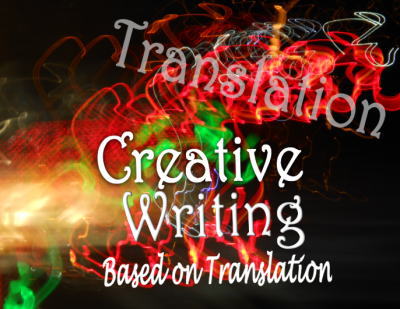ExitTrans Declaration
I’ve explained why we need to go beyond translation on the home page and why plain translation doesn’t produce a decent Japanese adaptation of an English writing project in Why Goody Translation Doesn’t Work?.
Here, I’ll elaborate on why I need to stop calling myself a translator. More precisely, I’ve introduced myself under many names: a creative translator, TransWriter, or even TransCreator, but none of them exactly has explained what I do. Indeed, my work would remain the same for whatever name, and the name of the game is writing based on translation that can read as if it had been created in the target language from scratch.
Now before showing my reasons, let me define the range where this ExitTrans declaration should apply. I need to do this because, in the translation industry, some may think that they shouldn’t allow translators the freedom of modifying the original sentences in any way, including additions and omissions. To them, translators (or writers) who dare to do that even for the sake of good reading could be a mild case of ‘villain.’ (Now you see why I decided to quit translation.) Therefore, I want to exclude projects not intended for readers’ good reading experience, inspiring, entertaining, or encouraging them to take positive actions.
 The First Reason Why I Should Stop Being a Translator. The First Reason Why I Should Stop Being a Translator.
The first reason lies in the term ‘translation’. For the sake of the word, it would provoke an unreasonable, meaningless expectation on the buyer’s side: Anything they say can be translated word-for-word with the same effect and impact. Well, even though it’s impossible between very different languages.
Such an instance happens when the client’s mother tongue is English or another European language, and they have almost no knowledge of the Japanese language. They simply can’t imagine how enormously different two languages can be. They may try, but their understanding remains based on differences among English and German, French, Spanish, etc.
One example is a client who believed her highly creative (according to her) catchphrase should be translated word-for-word into Japanese, with the original’s beauty, uniqueness, inventiveness, inspiration, whatever, intact. Even after an elaborate, time- and energy-consuming explanation that it was impossible because Japanese lacked the counterparts of some specific English function words, she seemed not convinced. That reminded me, more than never, of a haiku by Kobayashi Issa, which describes the innocent lunacy of a child who craves a beautiful full moon in the sky and cries because nobody can bring it to him.
That was an extreme case where you may hate yourself for being at the wrong place, at the wrong time, with the wrong client. But mild cases are daily events both in English-Japanese and Japanese-English projects. Hence comes my decision: My job is not translation but creative writing based on the translation. OK, that may be a tiny difference, but still, a significant difference in the sense that I don’t do translation because it never works.
 And the Second Reason. And the Second Reason.
Regardless of How Far Machine Translation Can Go, we are on the steady path toward a future like Star Trek, where Universal Translator is a commodity just like our wristwatch. That translator would be far from the current translation software installed on your mobile phone; it’s the real thing you don’t even feel you’re using!
On its way to that destination, technology would replace human translators. When that’s happening, we, humans, can gracefully give our old job to machines and go a step further beyond goody translation.

Going beyond translation is a reasonable and wise approach.
|



 The First Reason Why I Should Stop Being a Translator.
The First Reason Why I Should Stop Being a Translator.

